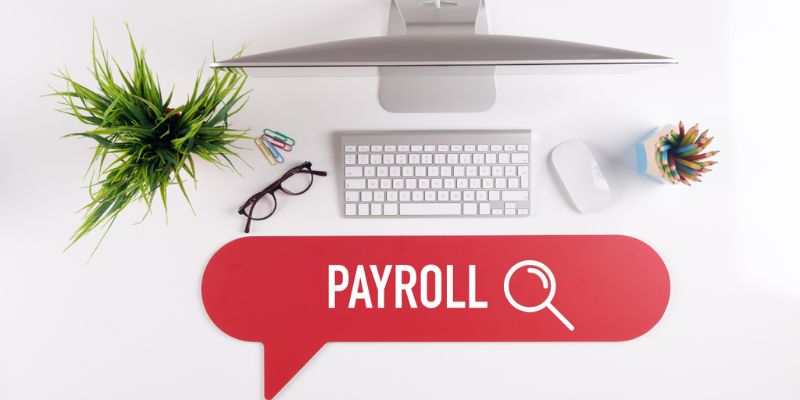Usability testing is a fundamental aspect of ensuring the success of a software application. By conducting usability tests, developers and designers can gather valuable feedback on how users interact with the software, identify pain points, and improve the overall user experience (UX). This process is not just about testing whether the software works but also about making sure it’s intuitive, accessible, and satisfying to use.
In this ultimate guide to conducting usability testing for software applications, we’ll cover the essential steps, best practices, and techniques that can help you execute effective usability tests. Additionally, we’ll discuss how you can enhance your skills as a software tester, which will be essential in evaluating the usability of software applications.
1. What is Usability Testing?
Usability testing involves observing real users as they interact with your software application to identify usability issues, gather feedback, and assess how easily the software can be used. The goal is to ensure that the software meets the users’ needs while being easy to understand and navigate.
Usability testing is a crucial part of the software development lifecycle, helping to validate design choices, ensure accessibility, and enhance the overall user experience. It is also an iterative process, where feedback gathered from one round of testing can lead to design improvements that will be tested again in subsequent rounds.
2. Why is Usability Testing Important?
The importance of usability testing cannot be overstated. Here are some of the key reasons why you should integrate usability testing into your software development process:
- Improved User Experience: Usability testing helps to uncover problems in the user interface (UI) and user experience (UX) design that might hinder the overall user experience.
- Increased Customer Satisfaction: When users find software easy to use and intuitive, they are more likely to be satisfied with the product, leading to higher retention and positive reviews.
- Reduced Support Costs: By identifying usability issues early, you can prevent customer complaints and reduce the number of support calls related to user confusion or frustration.
- Better Product Adoption: If the software is easy to navigate and meets user needs, users will be more likely to adopt and continue using the software.
3. Types of Usability Testing
There are several types of usability testing that can be performed to gather different insights. Understanding which type to use for your project is essential. Here are the most common types:
a. Formative Usability Testing
Formative testing is typically conducted early in the development process. It’s used to gather initial feedback and guide design decisions. The goal is to identify potential usability problems before the software is fully developed. This type of testing is often informal and conducted with a small group of users.
b. Summative Usability Testing
Summative testing is done after the software has been developed and is used to evaluate how well the software meets its usability goals. This testing is typically more formal and focuses on performance metrics such as task completion time, error rate, and user satisfaction.
c. Moderated Usability Testing
In moderated testing, a facilitator (moderator) is present to guide users through tasks and ask follow-up questions. The moderator may help if the user gets stuck and provides insights into the thought process during testing. This type of testing is more controlled and allows the facilitator to probe deeper into user reactions.
d. Unmoderated Usability Testing
In unmoderated testing, users perform tasks on their own without the presence of a facilitator. They usually complete a series of tasks on a website or application, and their interactions are recorded for later analysis. This method is cost-effective and scalable, making it ideal for gathering data from a large group of users.
e. Remote Usability Testing
Remote usability testing allows participants to complete tasks from their own locations, often using their own devices. This approach can be either moderated or unmoderated. Remote testing provides real-world conditions and can be more convenient for both users and testers.
4. Steps in Conducting Usability Testing
Conducting usability testing involves several steps. Here’s a breakdown of the process:
a. Define Your Goals
Before you begin usability testing, it’s essential to define the goals of the test. Ask yourself the following questions:
- What do you want to learn from the testing?
- Are you testing a new feature or the overall user interface?
- Are you testing task completion or the effectiveness of a specific design element?
Defining clear objectives will help you focus your testing efforts and ensure that the feedback you gather is useful.
b. Identify the Target Users
Identify the target users for your software. These should be individuals who represent the audience for whom the software is being developed. This group could include new users, experienced users, or users with specific needs or preferences.
Creating user personas based on demographics, behaviors, and goals can help you select participants that align with the intended audience.
c. Select Testing Method
Choose the most appropriate usability testing method based on your goals, budget, and timeline. Decide whether you will conduct moderated or unmoderated testing, remote or in-person testing, and formative or summative testing.
d. Prepare Testing Materials
You’ll need to prepare the tasks that users will complete during testing. These tasks should be realistic and aligned with how users would interact with the software in real-world scenarios. Make sure the tasks are clear and easy to understand.
Additionally, prepare any tools you’ll use to record user behavior, such as screen recording software or usability testing platforms.
e. Recruit Participants
Recruit participants who fit your target user profile. You can use online platforms to find participants or recruit from within your organization. Ensure that the group is diverse and representative of your software’s user base.
f. Conduct the Test
During the test, observe users as they complete the tasks and gather qualitative and quantitative data. Focus on both how users complete tasks and how they feel during the process. Pay attention to where they struggle, where they feel confused, and where they are satisfied.
g. Analyze Results
After completing the test, analyze the results. Look for patterns in the users’ behavior, identify usability issues, and categorize the findings. You should also prioritize issues based on severity and impact on the user experience.
h. Make Improvements
Use the insights from usability testing to make improvements to the software. This could involve redesigning elements of the interface, simplifying processes, or improving error handling.
i. Iterate and Retest
Usability testing should be an iterative process. After making improvements, conduct another round of usability testing to ensure that the changes have addressed the issues and that new problems haven’t emerged.
5. Best Practices for Usability Testing
To ensure successful usability testing, follow these best practices:
- Keep it simple: Don’t overload users with complex tasks. Keep the scenarios realistic and straightforward.
- Test early and often: Usability testing should be conducted early in the development process and repeated throughout. Early testing helps catch issues before they become more costly to fix.
- Avoid bias: Try not to influence participants or lead them to specific answers. Let them explore the software naturally.
- Use a variety of users: Include participants with different levels of experience to get a broad range of feedback.
- Analyze both qualitative and quantitative data: Don’t rely solely on numbers. Pay attention to user feedback, body language, and verbal reactions.
6. How to Enhance Your Skills as a Software Tester
As a software tester, developing strong skills in usability testing can significantly improve your ability to evaluate and enhance software applications. Here are some key strengths that you should work on:
- Attention to Detail: A good software tester must be able to spot even the smallest usability issues that could negatively impact the user experience.
- Communication Skills: Being able to clearly articulate findings and suggestions is essential for ensuring that improvements are made based on usability testing feedback.
- Critical Thinking: Testers should be able to analyze results and identify underlying issues that may not be immediately apparent.
- Empathy: Understanding users’ pain points and thinking from their perspective is crucial when evaluating usability.
- Experience with Testing Tools: Familiarizing yourself with usability testing tools such as screen recording software, survey tools, and analytics platforms can make the process more efficient.
If you’re looking to hone your usability testing skills, enrolling in a software testing training institute can be an excellent way to gain hands-on experience, learn industry-standard tools, and gain insights from experts in the field.
Conclusion
Usability testing is an essential process for creating user-friendly software applications. By understanding the different types of testing, following best practices, and improving your skills as a software tester, you can ensure that the software you help develop delivers an exceptional user experience.
As you continue to enhance your expertise in usability testing, you might consider enrolling in a software testing training institute in Noida, Delhi, Jaipur, Pune and other cities in India. These training programs can help you acquire the skills necessary to perform thorough usability tests, ensuring the success of software applications and providing a better experience for users.
Also Read
- ► Jasa Instalasi Server Denpasar: Solusi IT untuk Bisnis Anda
- ► German Language Scope in India in 2025
- ► 5 Tips for Finding the Best Bulk T-Shirt Supplier
- ► Jasa Instalasi Fiber Optic Bali: Solusi IT Bisnis Anda
- ► Top Lead Generation Strategies to Grow Your Business in 2025
- ► Oxford Scholar Programme: Opportunities for Future Leaders
- ► Elevate Your Brand’s Advertising Strategy with an Ad Films Production House
- ► Disguised Toast Official Hoodies A Stylish Statement from Disguised Toast
- ► Tax Incentives for Businesses in the Philippines’ PEZA Zones
- ► Why Cloud Computing and Full Stack Development Go Hand-in-Hand
- ► Cheap Flyer Printing: A Cost-Effective Solution for Your Marketing Needs
- ► How to Become a Digital Marketer: Best Courses for Beginners
- ► Revenge Hoodies modern perfect shop
- ► 7 Required Unique Skills of an SEO Executive in 2025!
- ► 5 Key Advantages of Taking Mock Tests Through Online NEET Coaching!





